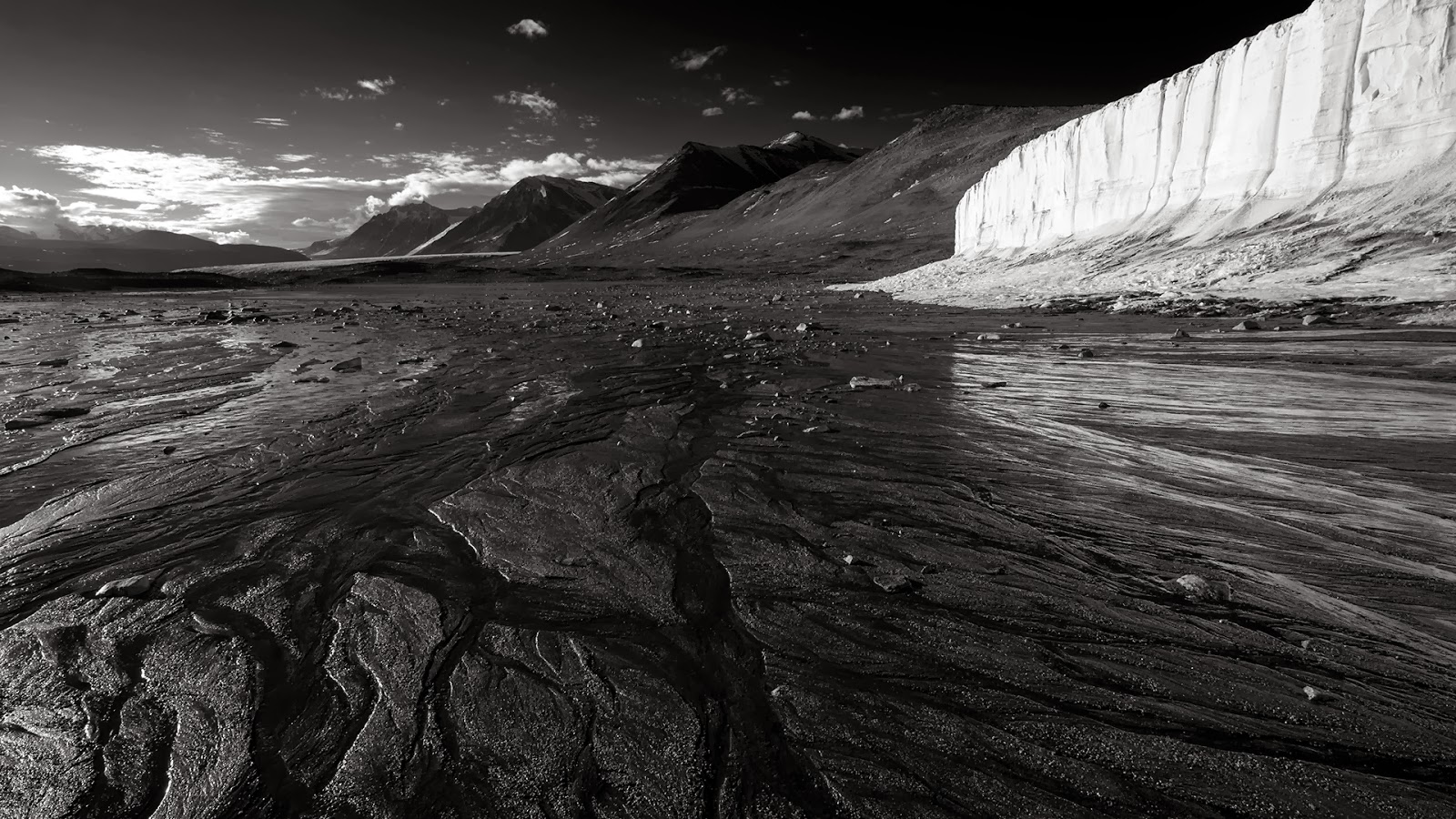Many scientific and logistic
operations are run by aircraft these days in the Antarctic.
There are four helicopters on
station: two Bell 212 and two Eurocopter A-Star. The Bell is a modern version of
the Huey, used during the Viet Nam war. The “helos” are just the perfect
machine to reach unreachable points around McMurdo, such as Abbot Peak, or the
Dry Valleys. Unfortunately, their range is quite limited and you sometimes have
to stop en route to refuel at a fuel cache…
As far as airplanes, the
Antarctic Programs use the Lockheed C130 Hercules (also used in Greenland), equipped
with skis. They fly between McMurdo, New Zealand and the South Pole. They also
serve field camps such as Wissard.
A Boeing C17 Globemaster flies
between New Zealand and McMurdo at the beginning when the sea ice runway is
strong enough and at the end of the season when Pegasus Field, located on the
Ross Ice Shelf, is suitable for operations. It is a wheeled aircraft.
Ken Boreck operates Twin Otters
and DC3 Basler from Pegasus Field.
Pegasus Field is the ice runway
located on Ross Ice Shelf, about 20km from McMurdo. It is named after the
Lockheed Constellation “Pegasus” which crashed there in 1970.
Beaucoup des opérations
logistiques et scientifiques sont effectuées avec l’aide d’aéronefs divers et variés.
Quatre hélicoptères sont en
permanence sur la base: deux Bell 212 et deux Eurocopter AS350 Ecureuil
(A-Star). Le Bell 212 est une version modernisée du Huey utilisé pendant la
guerre du Viet Nam, motorisé par deux moteurs. Les hélicos restent la machine parfaite
pour atteindre des endroits inaccessibles autour de McMurdo, comme Abbot Peak
sur les pentes du Mont Erebus ou encore les Vallées Sèches. Malheureusement
leur rayon d’action est relativement limité et il est parfois nécessaire de s’arréter
en route pour refaire le plein d’essence à un depot de carburant…
Pour ce qui est des avions, le
programme Antarctique utilise les Lockheed C130 Hercules de la Guarde
Nationale, équipés de skis. Ils volent entre la Nouvelle Zélande, McMurdo et le
Pôle Sud. Ils sont également utilisés pour ravitailler les camps de terrain
comme Wissard.
Un Boeing C17 Globemaster fait
également les liaisons entre la Nouvelle Zélande et McMurdo, en début de saison
quand la piste sur la banquise est suffisamment solide, et en fin de saison,
quand la piste de Pegasus Field, située sur la barrière de glace de Ross, est
en bon état. Pas de skis pour le C17… Il se pose sur ses roues…
Ken Boreck, entreprise
canadienne, opère plusieurs De Havilland Twin Otter et DC3 “Basler”.
La piste d’attérissage Pegasus se
situe sur la barrière de glace de Ross, à environ 20km de McMurdo. Elle est appelée
ainsi en souvenir du Lockheed Constellation du même nom qui s’y est écrasé en
1970.
Eurocopter A-Star and Bell 212 at the helo pad on station.
Eurocopter AS350 et Bell 212 sur l'héliport de la station.
Bell 212 landing in Garwood Valley.
Bell 212 à l’attérissage dans la
vallée de Garwood.
Bell 212 supporting one of our project in Garwood Valley.
Bell 212 utilisé pour un de nos projets dans la vallée de Garwood.
Bell 212 bringing our equipment on Abbot Peak, with Mt Erebus and The Fang in the background.
Bell 212 nous apportant notre
équipement au sommet d’Abbot Peak, Mt Erebus et The Fang en fond.
Eurocopter A-Star in flight.
Eurocopter AS350 en vol.
Eurocopter A-Star at Marble Point.
Eurocopter AS350 à Marble Point.
Russian Kamov KA32 landing at the helipad.
Kamov KA32 Russe à l’attérissage.
Lockheed C130 Hercules on skis at Pegasus Field.
Lockheed C130 Hercules sur skis à Pegasus Field.
Boeing C17 Globemaster at Pegasus Field.
Boeing C17 Globemaster à Pegasus Field.
De Havilland Twin Otter refueling at CTAM Camp in the Transantarctic Mountains.
De Havilland Twin Otter au ravitaillement à CTAM dans les Montagnes Transantarctiques.
Twin Otter, landed on a blue ice field at Lone Wolf Nunatak. One of the scariest landing ever!
Twin Otter, posé sur un champ de glace vive à Lone Wolf Nunatak. Un des l’attérissage les plus effrayant de ma vie!
Twin Otter at Iggy Ridge at the edge of the polar plateau.
Twin Otter à Iggy Ridge, à la bordure du plateau polaire.
Douglas DC-3 Basler.
Lockheed Constellation "Pegasus" crashed on the ice...
Lockheed Constellation "Pegasus" écrasé sur la glace...
Links | Liens
DC-3 Basler (EN) |
DC-3 Basler (FR)
Pegasus Field (EN) |
Pegasus (FR)
Lockheed Constellation (EN) |
Lockheed Constellation (FR)





















































